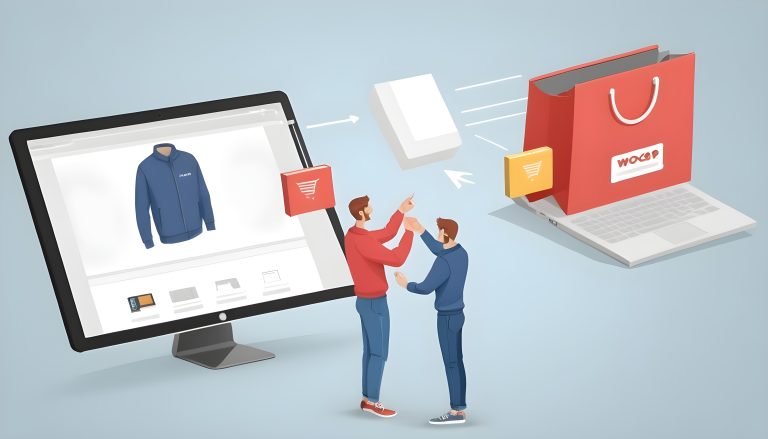Sometimes you have to catch fish with your bare hands in order to know how hard it is. That’s kind of what lead generation feels like if you don’t have a plan. Luckily, in the B2B marketing world, there are some time-tested strategies that can make this happen and even make it a source of fun. This guide will discuss some of the best B2B lead generation strategies to help you attract more business. Let’s dive into them!
What is B2B Lead Generation?
First things first, let’s just get clear on what we mean by B2B lead generation. Simply put, it refers to the process of identifying and attracting potential customers for your products or services who could be businesses (leads). The reason why this is important is that it fills up your sales pipeline resulting in conversions and revenues.
Why is B2B Lead Generation Important?
It would be difficult to sell a new type of computer software package to a retail store for instance. Of course they might be interested but wouldn’t a tech company or software development firm be an easier bet? This is where B2B lead generation comes in handy. It enables companies to focus their marketing efforts on the right people hence increasing chances of making successful sales while at the same time building long-lasting business relationships.
Effective B2B Lead Generation Strategies
Well, now that we know why it’s crucial; let’s look at some effective techniques:
Content Marketing: Share Your Expertise
Think about content marketing as storytelling. When done well, not only does it inform but also entertains and develops trust with your readership. Develop valuable content that speaks directly to the pain points experienced by the people in your target audience such as blog posts, whitepapers, case studies and webinars.
Example: Hubspot uses comprehensive guides and ebooks which are tailored towards attracting attention from its audience, making it a go-to source in the marketing industry.
Social Media Engagement: Connect with Prospects
Social media isn’t only for selfies and cat videos. LinkedIn and Twitter, among other platforms, can be treasure troves of opportunities for B2B leads. Share relevant content, engage followers and join conversations about your trade to establish credibility and reach out to potential customers.
Example: IBM uses LinkedIn to share relevant market insights, connect with tech professionals and demonstrate their offerings.
Email Marketing: Nurture Relationships
When it comes to coffee talk, email marketing is similar. It’s personal and you get to interact directly with your target audience. Create personalized emails that offer solutions to their pain points while guiding them through the sales funnel.
Example: Salesforce sends personalised emails to prospects which highlight features and benefits of their CRM software so as to nurture them until they are ready for purchase.
SEO and SEM: Get Found Online
If your website is your digital storefront then SEO (Search Engine Optimization) plus SEM (Search Engine Marketing) are the signs pointing customers there. Use appropriate keywords on your website for better search rankings as well as paid ads meant for increased visibility.
Example: Moz has employed SEO techniques that enable it rank highly in search results thus driving organic traffic into its site.
Networking and Events: Build Real Connections
Networking is all about connections. Attend industry events, trade shows or conferences so as to meet potential customers face-to-face. A handshake accompanied by small talk sometimes takes less time than an entire email series but may end up being more effective when closing deals.
Example: Every year Microsoft organizes events that attract thousands of professionals from the industry, providing a platform to exhibit products and form relationships.
Overcoming Common B2B Lead Generation Challenges
Even the best fishermen have obstacles. Find below some usual stumbling blocks in B2B lead generation and how to come out successful:
Tough Competition: Develop unique value propositions and personalised solutions to differentiate yourself.
Quality of Leads: Emphasize quality over quantity. Use targeted approaches for attracting leads that fall under your ideal customer profile.
Resource Allocation: Invest in automated lead generation tools and technologies that saves time and other resources.
Tools and Resources for B2B Lead Generation
There are several useful tools you can use to simplify your task of lead generation:
HubSpot: A marketing software package which helps with managing leads as well as nurturing prospects;
LinkedIn Sales Navigator: Allows identification as well as connection with suitable company prospects;
SEMrush: Helps with SEO and PPC strategies advice on boosting online visibility;
Conclusion
B2B Lead Generation is both an art form and a science experiment. These tactics will not only draw more leads, but they will also help you establish stronger ties with your prospective customers. Ultimately, everything revolves around giving something important away at each point in the process, while building confidence. Do you want to spread your wings wider? Introduce these steps within your marketing strategy today itself and see how much higher it takes your business!
Call to Action
Looking forward to being updated on latest B2B marketing tips & strategies? You should look forward to joining our community by subscribing into our newsletters. Let’s take it up a notch!









